You asked for it, you got it, MIDI Guitar 2 Review! It’s so serendipitous it rhymes.
“MIDI Guitar 2 Review”, say it with me now! MIDIGuitar2 REVIEW, MIDIGuitar2 REVIEW, MIDIGuitar2 REVIEWWWWWWWW.
So terribly sorry. Actual content STARTING NOW.
Happy Sunday folks, I have been meaning to review MIDI Guitar 2 for a while now. Mostly because it just works. The software really works. If you aren’t going to take a look at the blood sweat and sweet sweet YouTube videos I created, here’s the main takeaway:
Jam Origin’s MIDI Guitar 2 is a fantastic piece of software that works like magic, most of the time.
I wholeheartedly recommend the product. It’s not perfect, but it’s close.
No, they did not pay me to write this. Yes, I bought it with my own ducats.
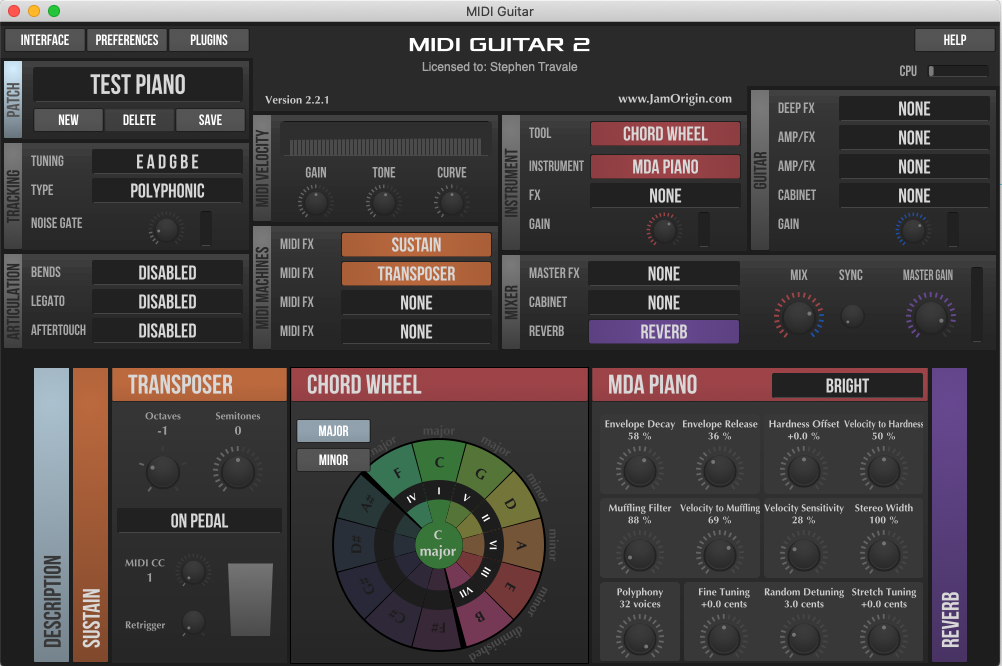
First of all, what is MIDI Guitar 2? If its name doesn’t give you any clues, it is a piece of software that turns your guitar (or bass) into a MIDI Controller.
What’s a MIDI controller? No offense, but how did you get here?
This review is going to be broken into two separate posts, the first will be the actual review, which you are reading now!
The second, which is what gets me the most excited about this software, is a surprise for now. Tune in next week!
For the review, I’ll first start by looking at the interface and usability of the application. I will then go into how well the main feature of the application functions. I will then show a couple features, and give my final thoughts on the product.
Before going any further I should mention that I am using the MIDI Guitar 2 Application, not the DAW plugin. While the plugin works well, I have had the least latency using the program outside of my DAW rather than from within it. There are very few differences between the two, so anything I mention here will apply to the plugin as well.
Interface and Usability
MIDI Guitar 2 has a pretty sophisticated interface, but it is not intimidating or difficult to operate. Something I appreciate is the simplicity of the “Interface Menu”. Everything is laid out logically and there is no guessing about what your settings are. Sounds minor, but little user interface decisions like this make using the software very intuitive.
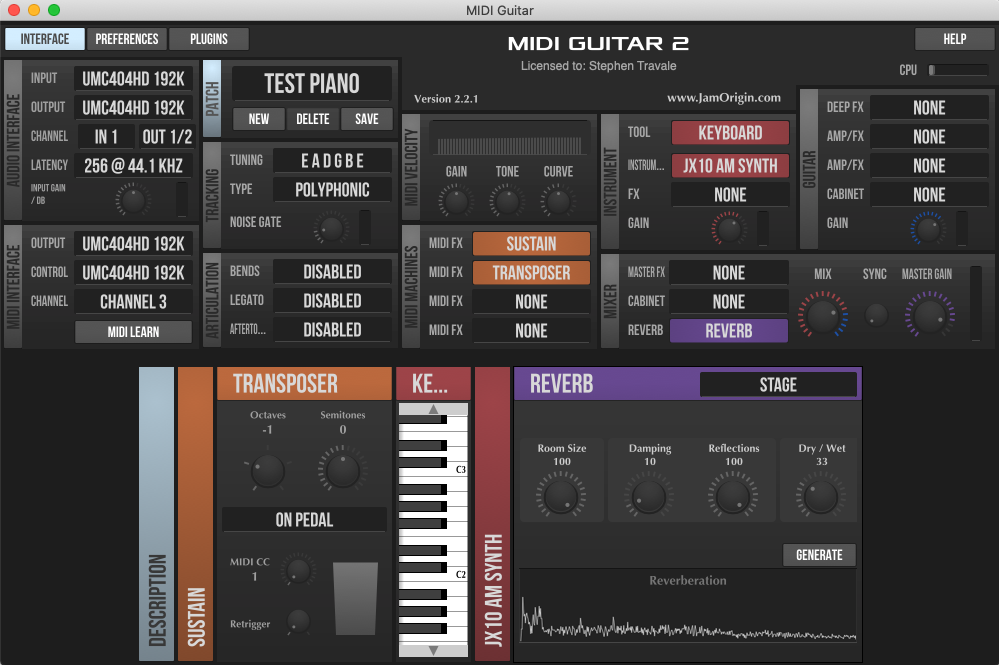

Within the application’s main interface you can choose different “Patches”. The factory patches give some good variety, but you can also create your own patches from scratch, or modify others to your liking.
Each patch allows you to customize 7 separate modules within the application:
Tracking
Articulation
MIDI Velocity
MIDI Machines
Instrument
Guitar
Mixer
A lot of these are self explanatory, and for the sake of review I am not going to delve into each. One thing I do want to talk about though, is the MIDI Machine’s section.
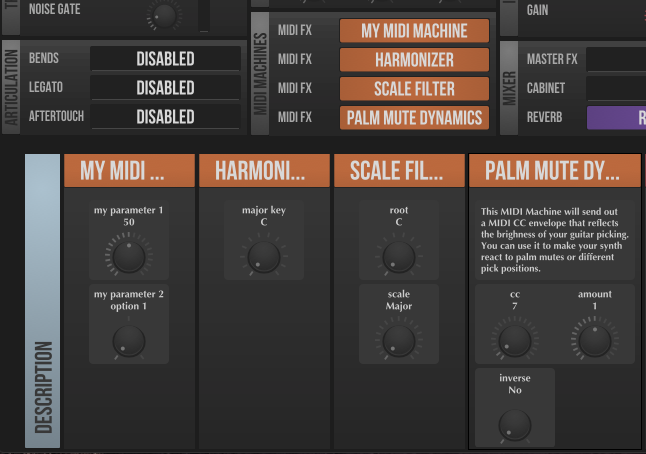

MIDI Machines are just gnarly. You can think of them like modulators of the MIDI data you are creating with your guitar. If that doesn’t make sense, an easy to understand example is the Scale Filter.
The scale filter will “filter” any notes you play that aren’t within the scale you chose from the final MIDI output. Played a sour note? Don’t worry, MIDI Guitar 2 will just ignore it when the Scale Filter is applied.
The “Harmonizer” sends extra notes that “harmonize” with the pitch your playing, just in case you’re a lonely musician.
Palm Mute Dynamics?! HOW COOL IS THAT.
What’s “My MIDI Machine”? Great question. MIDI Guitar 2 also allows you to create your own MIDI Machines right within the app. You can edit existing MIDI Machine scripts too.
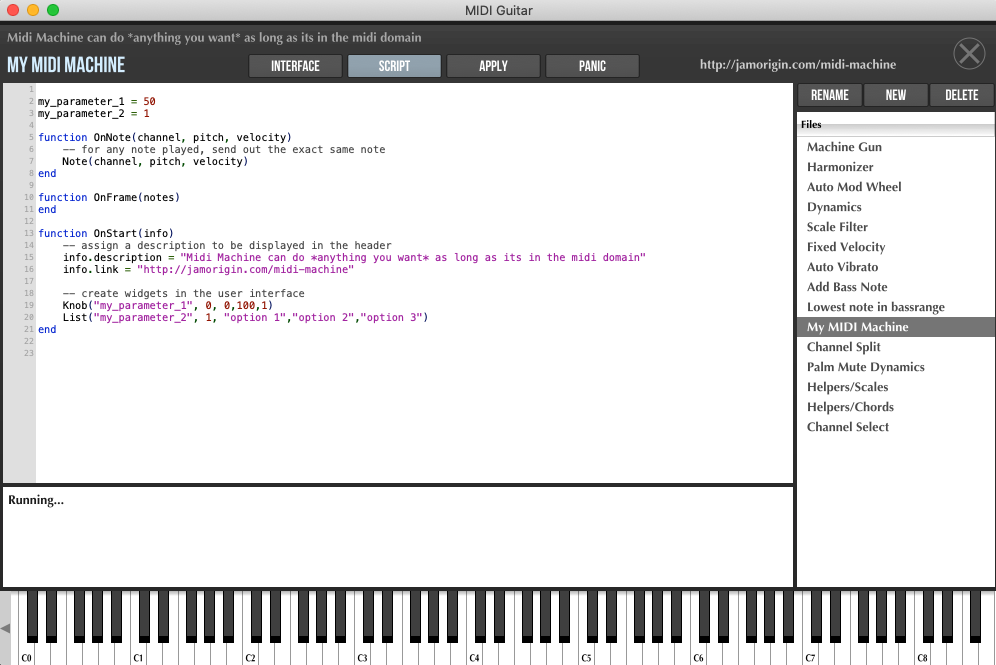

In short, it’s very usable.
Guitar to MIDI
That’s all fine and dandy, but it really doesn’t mean anything if the main function of the application doesn’t work. Good news is that it doesn’t just work, it really feels like magic sometimes.
The problem with magic though is that the cracks are all the more apparent when they show. Don’t get me wrong, this software works and I loves me my MIDI Guitar 2, but it isn’t perfect. Sometimes the velocity of notes are off, sometimes it is a little too sensitive. It is easier to show what I mean than it is to explain, so why don’t we check out some…VIDEOS. GASP.
Let’s start with the “Test Piano” patch. There are a few sound engines built in, so you can start making sounds without a DAW. This patch allows you to control a software piano. You can actually use this patch for free if you download the free trial. First we will test the “Polyphonic” mode.
And then the “Monophonic” mode.
After watching these videos I hope you understand what I mean by “close to perfect”. You can’t just shred through your guitar and expect every note to shine through. That being said, if you can play cleanly and consistently enough, I think shred synth is possible.
Here’s a little chord action with some riffery.
Now that’s all fine and dandy, but this isn’t even really what I purchased this application for. I wanted to be able to control all of my cool software synths with my guitar, because my keyboarding is woefully under developed. How well does that work do you ask? I will answer your question by using my guitar as a MIDI controller for a guitar. A Nylon software guitar.
That’s a dumb example, but it WORKS. So the setup must be hell right?
Nope, it isn’t even super menu divey, which is standard for MIDI-anything. For most people, you won’t even need to look at any instructions. The way the software interfaces with any DAW just makes sense.
It will depend on your setup, but here I have the MIDI Output set to “Virtual MIDI Output” and the Channel set to “1”. Now, if I have anything listening for MIDI on my computer on Channel 1, MIDI Guitar 2 will be able to control it.
This even makes it sound more complex then it is. Really it comes down to:
- Open MIDI Guitar 2 Application
- Open DAW
- Create Software Instrument Track
- Ensure this track is listening to MIDI Channel 1
- Shred them synths
The last thing I want to mention is pretty obvious, but you can also record your MIDI takes (DUH). Once they are recorded, you can modify or duplicate them just like you would with any other MIDI data.
Now that we have the MIDI data recorded, it can be modified just like any other MIDI data. As you can see a little cleaning needs to be done, especially when using Polyphonic mode. But the results are great, and it doesn’t take long to clean up the rogue notes.
This makes it much easier to track live synth parts, especially for a string-feller like me. Sequencers are nice, but sometimes you gotta inject a little feel.
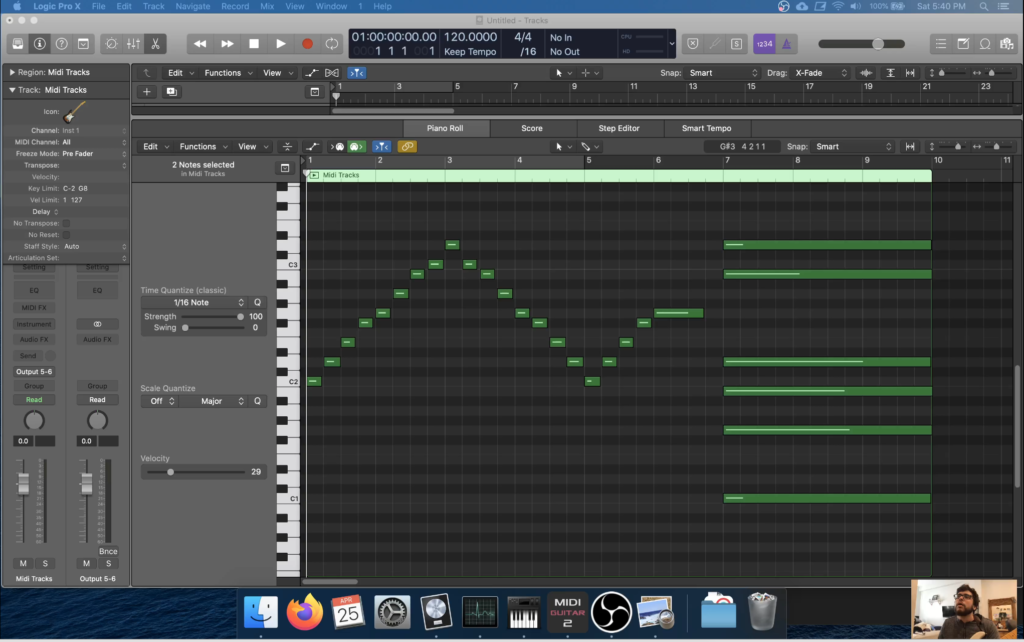

Alright, enough of me going ON and ON and ON.
Conclusion
Overall the software does exactly what it is supposed to, and then throws on all the bells and whistles. The MIDI notes that come out of the other end of your guitar aren’t always perfect, but it’s so close it feels like witchcraft. I didn’t even touch on the amp simulator, which is honestly not anything to write home about, but it’s there, and I really can’t complain with everything else it comes with.
Did I mention there’s a bass specific version included at no extra cost?
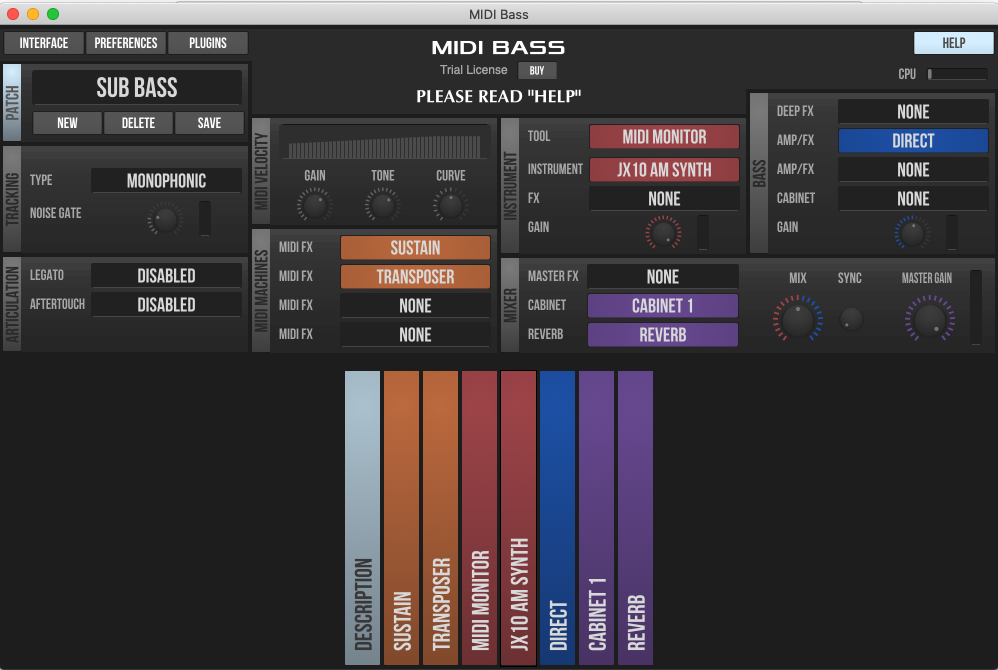

Overall, it’s amazing. It’s not perfect, but I’m not sure it gets much better than this, hardware or otherwise. Thanks Jam Origin, 99 buckies well spent.
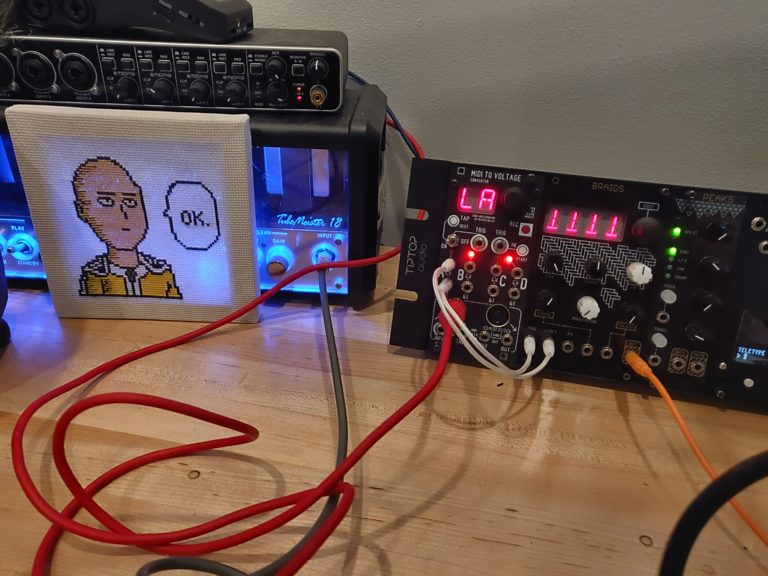

Stay tuned! Next week we’re getting weird with it.
Want more hot review action with a little DIY spice? Check out my review of LPZW’s Eurorack Pocket Operator Adapter. It’s also gnarly.

Thanks! I am interested in using my guitar to create projects using Logic Pro X’s Orchestral template and to then use the tracks with my audio tracks and to generate charts.
This might get me over the top!??!
I have a VG-99, so far the MIDI conversion is VERY messy!??!
Steve
Thanks for reading!!
I think it should work great for this, the midi translation is pretty clean. You may have to tidy up a couple rogue notes (if any), but best of luck with this project!
Also, you have a great name there fellow Steve.
Steve – thanks so much for the information on MG2. I was flailing about for the last 20 hours trying to make it work in Logic. I posted a question to the Screen Composers discuss list and your friend Nick Scrimshaw sent me this link. Working pretty well now. Will keep at it.
Happy subscribe to your blog if you would, all the best, Ed
Thanks for your comment Ed! Glad to hear my blog was helpful to you, if you’ve got any other questions please don’t hesitate to ask.